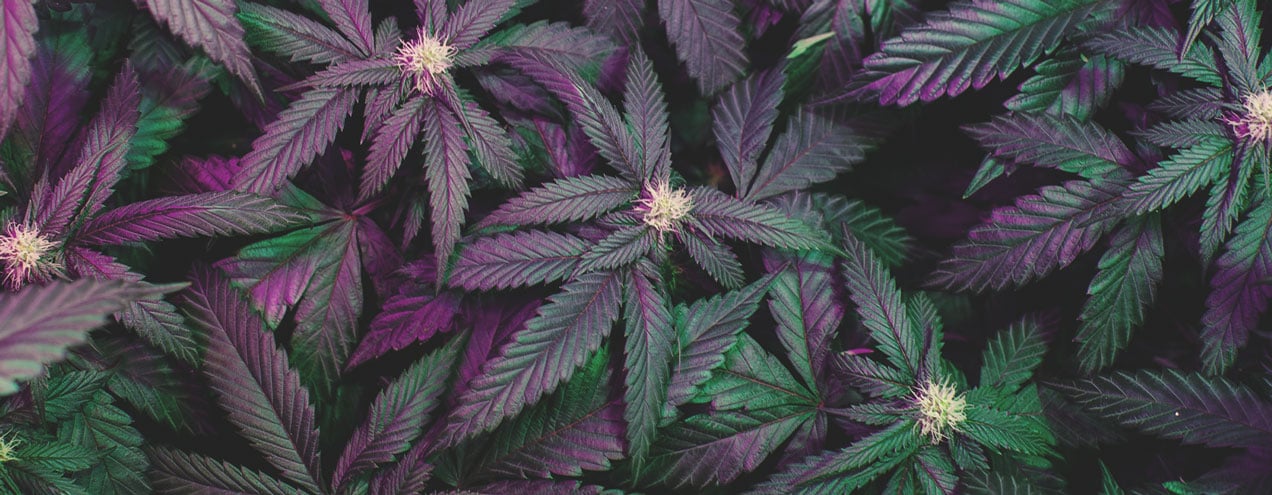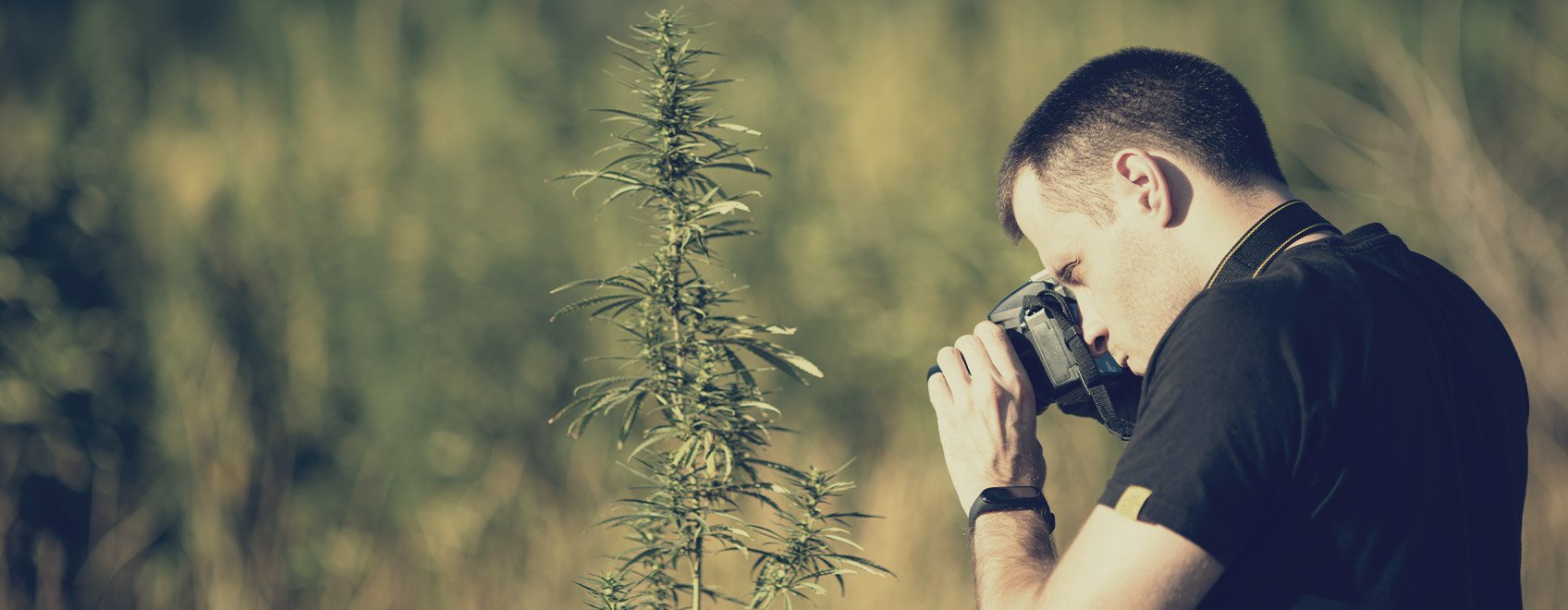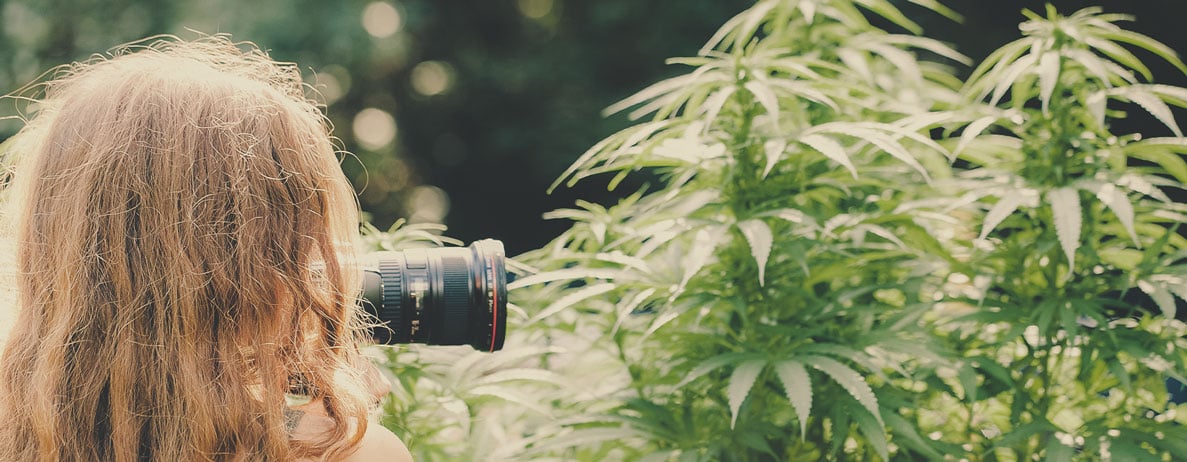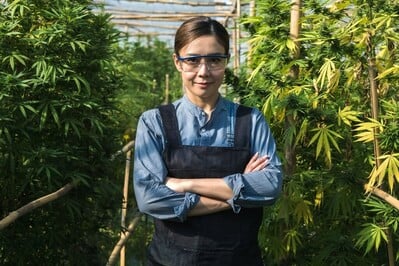.

RQS Interviews—Ophelia: Professional Cannabis Photographer
Hi, my name is Ophelia. I’m the founder and CEO of Stock Pot Images, a stock photo agency that specialises in cannabis-related imagery, including photography, video, and illustration. We are trying to change the public perception of cannabis!
Ever wondered how professionals capture the beauty of cannabis? Stock Pot founder and CEO Ophelia explains all in her exclusive interview with RQS, including top tips for budding photographers.
|
(Listen to it also in Spotify and Apple Podcast) |
|---|
| Listen to it also in Spotify and Apple Podcast |
1. What is the necessary equipment for a cannabis photoshoot? Does it need to be of professional quality?
That's a great question. Well, basically, it depends on what you're shooting. Are you on location? Are you in-studio? Every photoshoot is different, but the tool you must bring to each one is a clear understanding of cannabis. Because, if we're talking about cannabis, we need to know it. When you're going to shoot it, you should at least know the basics of the plant so that when you are directing your subjects or trying to find a great spot to shoot, you know what to ask the host or the grower. You don't want to seem like you don't know anything about the plant or what the grower is doing, because then they'll treat you differently.
So, basically, the biggest tool to bring to any photoshoot is knowledge of cannabis. Okay. And do the tools need to be of professional quality? Yes. If you're going to shoot an image that's going to be used online, or for someone's portfolio, or for marketing, always think professional. Always think about your lighting. Always think about set dressing; what is also in that photo, what should not be in that photo, right? If you're shooting, say, a CEO of a company in his office, and his brand's back there, but there's also a few brands that are not his that you included in a shot, you need to take all that out. So consider the whole story, not just the focus of the subject, but all the characters around that main subject.
2. We imagine there can be major differences between shooting indoors and outdoors. Could you name a few?
So, there are two main differences between indoor and outdoor shooting: one of the biggest things is lighting. When you're indoors, you have to create that mood, that light that you want. When you're outdoors, you have to pick the right time of day, right? Because whatever light is gonna be falling, it is too harsh during noon. Do you want sunrise light, which is more sort-of orange, or dusk light, which is a more violet colour. So really, again, know where you're shooting, research, and get all the tools that you need for both.
3. When shooting indoors, what’s the best way to adjust the lighting when we have yellow or red lights shining on the plants?
Well, here's a question; do you want authenticity? If so, you actually want to show what the eye sees. But, also, the eye won't see some of the spectrum emitted by LED lights; when you shoot it, you'll see purple because your eye is not seeing everything else, but with the camera you can adjust that in post. Or, if you're using a Canon 5D, get yourself some filters, right? You can put a clear fill colour filter according to what you're shooting on there to adjust it. Again, it’s what’s real, what is produced by science. So a lot of people love that purple light. I would also keep both shots, one that's been adjusted using saturation, and another one I would keep as a camera shot, because some of those purples are really lush and dark. And some photo editors love that look.

4. What are the differences between photographing living cannabis plants and harvested flowers?
As always, that's one of my favourites: watching it live and then seeing the harvest. If you can imagine, when you cut the plant down, it is losing a source of food and water, so it begins to wilt and start drying. And when they hang the cannabis up, it is so beautiful because it goes from this deep, deep green to this almost pale-green because it's losing its chlorophyll. And you start seeing the bud just drying a little and all the sugar leaves curling up.
When it's fresh just before harvest, you have this beautiful flower available to you. It doesn't look like a flower in your mind, right, as a rose or a daisy. But the cannabis flower is this wonderful, weird, almost alien-looking thing. You can see all the tiny little bits of sparkle and the sugar leaves it has. So that's a flower.
When you start photographing it, always get a really great macro lens. If you're using a newer iPhone, that's fine. But really, if you're becoming a professional photographer, get a professional set. That way, you can go deep in there and just look at all the beautiful inner workings of the bud. When you're photographing dry, again, there is a little bit of loss of colour. Unless you're shooting something like Granddaddy, perhaps there's a little bit of purple. But normally it's more of a muted green. But then all the browns start coming out, and the little bits of gold–yellow are in there. So the two are different—one is very lush, and one is more muted, but I say more dense.
Those are differences. But also, again, read as much as you can about cannabis because when you're shooting, you want to know what you're looking at. And also speak to your hosts: "I love blank by blank, blank, blank", right? And the host, "Oh my gosh, you know everything—shoot". More or less, this is my suggestion.
5. What aspects do you focus on the most when it comes to photographing concentrates?
Big difference! Let's think about ketchup, right? You have a tomato and you have ketchup. Yeah, so ketchup is a byproduct of tomatoes. So the same thing applies to concentrates; you have the bud and you have concentrates. A concentrate is basically ketchup; it is put through a chemical process to become what it is—a sort of golden-coloured product—and there's different kinds: there's sugar, there's wax, there's crumble, there's shatter, right, and also there's distillate. Just looking at it, it’s a deep gold, right; it's somewhat dark, it's just basically a gold colour. So in terms of shooting, a lot of people like to light it from below. If you get a simple light box (everyone has one of those), just put your concentrate in a clear jar on top of that and it just brings the colour out from below and makes the concentrate glow. So use tools like that. A light box is always great to shoot any oil or concentrate because it needs to be lit from below or behind.
"So for the professional cannabis photographer, you have to think like you're a professional product photographer, professional documentarian, or professional portrait photographer. You have to be the best in that field."
6. Could you share with us your top tips for taking creative cannabis pictures?
I love to spice it up. So, okay, a photograph of a tree is a tree, right? A rose is a rose. And you're exactly correct on that. A cannabis plant in this natural setting; there are millions of photos like that, right? Millions. So you're not really going to stand out unless you have a great location, a great time of day. So that's, again, considering the whole picture, not just the focus, right—everything around it.
There is another way of thinking. Think of product photography. When you see product photography, you think of Estée Lauder, like a beautiful lipstick, the background is lit, maybe it's on a pedestal, maybe it's on Plexiglas—but, same thing, take that bud and think of it as a product. What ways can you display it on a beautiful dish or add contrast in colour? Put it on a pattern. So that way, again, it's going back to the basics of photography—when you look at the composition, it is not just the centre; it is everything around it. Mona Lisa, the painting. Yes, she's at the centre. But then when you look behind her, there's the hills, the river… all of us compliment it because if she was just on a plain background, it would not be the same.

7. How would you recommend starting a career as a professional cannabis photographer?
When Stock Pot had over 240 photographers, and each of them went into it for different reasons, most of them, I would say only 1% of my 240 photographers, were professional cannabis photographers; they just strictly only did cannabis. The other 99% were also professional photographers that shot many other things; cars, people, locations, architecture, but they also have a love for cannabis. They just don't have a place to show their images. So they would just shoot it on their own. And then when I found them, they were so happy to find a place to put their images.
So for the professional cannabis photographer, you have to think like you're a professional product photographer, professional documentarian, or professional portrait photographer. You have to be the best in that field. So look at what's around you. See, that’s my best, my biggest suggestion—go to a site, a stock photography site like Alamy, which is huge in Europe. Just type in cannabis, weed, or whatever you want to put in, and see how many images there are. Also, look at all them and think, which one pops out the most to me? And what image is the one that stands out and gets licenced the most?
If I had my image in there, would it stand out? And if it doesn't, then you are just shooting for money. I mean, well, not even for money, but you're just shooting without any artistic intent. And sometimes, obviously, the industry of cannabis can feel unstable, as in the jobs that we offer, because there are like legality issues linked to some of the jobs.
8. What type of jobs can be expected of a cannabis photographer (e.g. in real estate, for dispensaries, cannabis photojournalists…)?
Another great question. Well, the thing is, what I found in California is basically when you go to a cannabis company, only the top 5% have money for marketing, right? So they have money to pay professional photographers their going rate. Everyone below that will want to use mostly stock photography that they get for $1.
If you want to get into cannabis, what I found is doing cold calls, do stuff for free. Well, okay, no, do not do stuff for free. Do work for your portfolio, find a farm. Try and get to know them, see if you know anyone who knows them and say, I just want to shoot photographs. I’ll give you my best picks, my top 10 photographs, and I’ll give them to you for free if you allow me to photograph right here.
And they will; they will most likely go for that because they need images too. And then you might be able to turn them into a client. So if you want to get into cannabis, find somebody who is in the cannabis industry already and say, can you make some intros? I want to take some product shots. I want to take some bad shots. Who do you know? It is using the power of your voice to find somebody in the industry. They’re not going to come to you. You have to go to them.

9. When we see the hashtag #weedporn on Instagram, what is it referring to?
It's just like with everything else: "Ah, man, that's the biggest, dankest bud, let's share it with my friends and followers!". It's similar to being a car enthusiast who saw the Datsun 240Z, or, "Ah, yeah, look at those rims on that one!". So basically, it is appreciation of the bud. I mean, when you tie it to porn, why do people look at porn? Basically, they're trying to use the same enthusiasm in the word porn for weed, as it is just sharing with enthusiasts. "Man, this was the best harvest", then everyone goes, "Oh, Bob. That's great". Right? That's how it's used there.
Basically, photography on Instagram sort of killed photography. All social media killed photography, because it basically made it worthless in people's eyes. Before you looked at a Picasso and said: “Ah, my five-year-old can do that with crayons”, right? Yeah, same thing. Now it's, "I can do that with my iPhone. Why do I need to hire you?". The thing is, it goes back to the cliché: give 1,000 monkeys 1,000 typewriters; one of them will type up Shakespeare. The same thing when you have a billion cameras out there. Some of them will take one really great photo. And that's it.
10. What are the best practices for shooting with a cellphone?
You can get any filter for your phone. Haven't we seen that? Where you get catfished? That man does not look like that, or that woman definitely doesn’t look like that. So you can do the same thing with your photographs of weed or anything; you can manipulate them, you can add colour.
Again, if you're going to do that, develop a personal style that you are consistent with. So if you're shooting with your iPhone and you use a certain filter, try to stick to that one filter, because that way your shots don't all look like Instagram photos with filters. Use the editing tools on the phone. I wouldn't use Instagram to edit your filters because then everything starts looking the same. So use the editing tools you have on your phone and possibly invest in a few more apps that are a little bit deeper.
There are Photoshop apps you can get on your phone too, to do a little bit of editing on there. Again, you're working on a small space, right? So if any of those images go to print, you will definitely need to know how to Airdrop your photos or send your photos to your desktop and go through all the pixels to make sure everything is clean, is high-enough res. So that's the only thing about using an iPhone. If you're using anything for print, you're really going to need a bigger more digital camera like a Canon 5D. Because the iPhone, yes, it can go up to maybe five megabytes; but, then again, if someone really wants that photo and they want to go big on it, you're not going to be able to do that on your phone.
Plus, if you filter it all the way through, it softens all the pixels in your image so it becomes softer and not sharp. I mean, if you want to practice doing that, look at one original photo and play through a bunch of filters and then explode them up. You will see the pixels have all changed in our software and the filter one. So there are pluses and minuses to using a smartphone. But I'd say it's better for social media. But if you're a professional, you really have to invest in a professional camera.









































